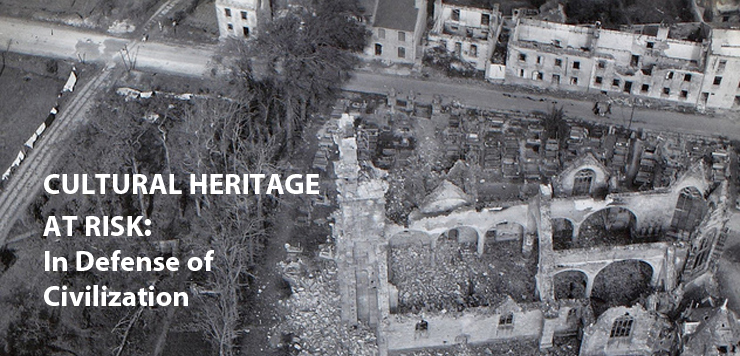Location
Campus Center Ballroom
Start Date
27-10-2017 2:00 PM
End Date
27-10-2017 2:30 PM
Abstract
At the midpoint of the second decade of the 21st century, the world is experiencing deliberate destruction of cultural property at a scale not seen since the Second World War. Future protection and preservation of cultural heritage depends on learning from tragedy and applying these lessons as pro-actively as possible. First, we are discovering that no matter the threat, there are people who risk their lives to save artifacts and features of their culture, and the motives for this courage are retrospectively clear. For a community to survive a conflict or disaster as a corporate entity, elements of shared heritage provide an anchor for recovery. The US and NATO military organizations are learning these lessons as well. When foreign elements are able to identify and respect the valued expressions of heritage in the host nation landscape, they can assist in stabilization and community recovery. This type of capability relies on military education, operations planning with cultural property in mind, and robust partnerships with not just local champions of preservation but also our academic institutions here at home.
Included in
Archaeological Anthropology Commons, Architectural History and Criticism Commons, Art and Materials Conservation Commons, Arts Management Commons, Cultural Resource Management and Policy Analysis Commons, Fine Arts Commons, Forensic Science and Technology Commons, Geographic Information Sciences Commons, Historic Preservation and Conservation Commons, International Relations Commons, Other History of Art, Architecture, and Archaeology Commons
Lessons Learned from Culture in Crisis; or Protecting the Past to Save the Future
Campus Center Ballroom
At the midpoint of the second decade of the 21st century, the world is experiencing deliberate destruction of cultural property at a scale not seen since the Second World War. Future protection and preservation of cultural heritage depends on learning from tragedy and applying these lessons as pro-actively as possible. First, we are discovering that no matter the threat, there are people who risk their lives to save artifacts and features of their culture, and the motives for this courage are retrospectively clear. For a community to survive a conflict or disaster as a corporate entity, elements of shared heritage provide an anchor for recovery. The US and NATO military organizations are learning these lessons as well. When foreign elements are able to identify and respect the valued expressions of heritage in the host nation landscape, they can assist in stabilization and community recovery. This type of capability relies on military education, operations planning with cultural property in mind, and robust partnerships with not just local champions of preservation but also our academic institutions here at home.

Speaker Information
Dr. Laurie Rush is an Anthropologist and Archaeologist who has lived, worked and studied in northern New York for over thirty years. Her area of research focuses on Native Americans of northeastern North America. She has a BA from Indiana University Bloomington, an MA and PhD from Northwestern University, and is a fellow of the National Science Foundation and the American Academy in Rome. Dr. Rush was military liaison for return of Ur to the Iraqi People, has represented the US DoD for heritage issues in Kabul and across the Middle East, and recently co-directed a NATO project developing recommendations for cultural property protection policy, doctrine, and best practices. She is a Board Member of the US Committee of the Blue Shield, has won numerous awards, and lectures and publishes internationally. Dr. Rush is profiled in “Lives in Ruins” and is co-author of “The Carabinieri TPC; Saving the World’s Heritage”.